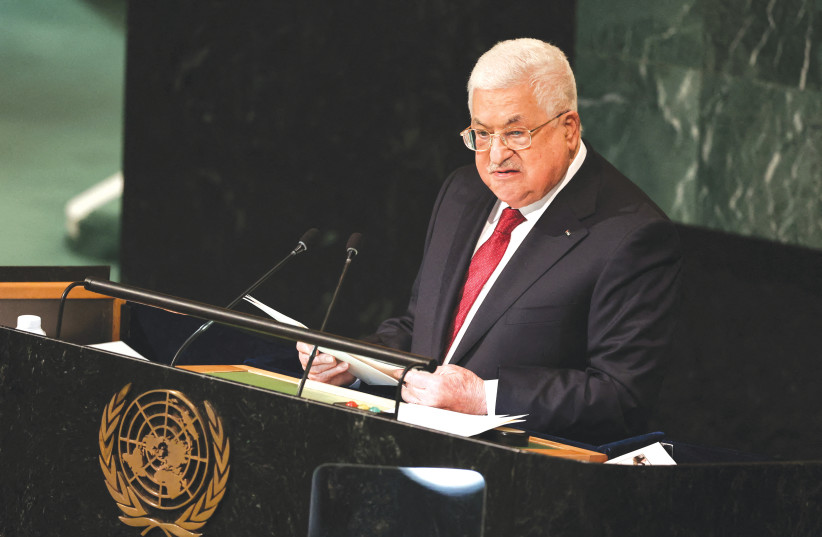Both the Left, Right are wrong about Israel settlement policy - opinion

Despite what the Israeli Left would fear and some on the Right would welcome, the policy of expanding existing settlements doesn't deter a two-state solution.
The current dust-up over settlement policy within the new Israeli government opens a path to a clearer understanding of the critical distinctions between the catchphrases “expanded settlement,” “new settlement building,” “new settlements,” etc. In fact, no new settlements have been established over recent years while a few thousand new homes have been added to existing towns in Judea and Samaria in the West Bank.
Foreign government deriders must know this but may wish to ignore it so as not to weaken their claim that even a moderate Israeli settlement policy damages the prospect for a two-state solution. As a retired American foreign service officer, I have spent 30 years in the arduous tasks involved in state-building around the world.
Despite what the Israeli Left would fear and some on the Right would welcome, the policy of expanding existing settlements in Judea and Samaria but not the number of towns does not meaningfully deter the eventual achievement of a two-state solution. Some on the Right wish for new settlements to eventually destroy, not just damage, such a solution.
In parallel form, many on the Left want to keep distinctions vague so as to garner additional support and pressure for a Palestinian state. However, neither fringe appears ready to deal with political realities.
“Two states for two peoples” has become a cliché
The catchphrase “two states for two peoples” has become so cliché that it limits creative thinking about solutions. It would be better to analyze the situation on the ground in wider terms and also with certain other paradigms: two governments in one land; the place of Jordan in such an equation in terms of federation or confederation; the fact that a Palestinian Arab state already exists under the executive, legislative and judicial control of the Palestinian Authority (PA).
The issue here, therefore, is the level of sovereignty such a state should have but not whether it already exists or not. Yet, the PA continues to obfuscate the issue in order to hide the reality that it is so far in the development category of a failed state hiding behind the smoke screen of “end the occupation.”
NONETHELESS, IT should be admitted that it feels at least partially paralyzed by the eminent threat of a Hamas takeover. The PLO feels that it dare not hold legislative elections after the past 17 years since Hamas won the last round in 2006 only to find the results annulled by Ramallah. And, sorry to say, it is right.
This situation will not change until Israel, whatever its government, decides to reverse course and not suffer Hamas in power in Gaza in order to check the PA. There is hope for such a policy change should the new government in Jerusalem come to see Gaza not in the paradigm of Palestine but in of ayatollah Iran. Otherwise, the continuance of the current policy may lead from check to the disaster of checkmate on the local and regional gameboard.
In the meantime, while peace waits for this larger picture to be seen clearly, the settlements issue is pushed forward to fully occupy our attention. The main piston in such a push is the claim that territorial contiguity is at its heart. This is not as critical as it might first appear in terms of Palestinian state viability. Such contiguity, in fact, may be achievable with modern engineering technology.
This would, however, require a paradigm shift away from land toward people. It is not land that creates a people but the reverse. It would be interesting to mount a study of how the recovered Gush Etzion settlements and the surrounding Arab towns are faring within and among themselves in terms of interconnectivity and how even that might be improved. This is the crux of the matter.
With over 500,000 Jews in some 200 towns living in the administered territories today, there is no chance under heaven for the transfer of any meaningful part, as was accomplished totally and so traumatically in 2005 when “only” 8,000 pioneer settlers were expelled from a mere 21 towns in Gaza, with Hamas claiming that its path is the way.
It would do well to retreat from the perpetuation of such folly, face reality squarely and plan with Jerusalem, Ramallah and Amman how to expand interconnectivity for Palestinian Jews and Arabs within Judea and Samaria. All the people of this one land already with its two governments deserve nothing less.
The writer is an American-born retired US Foreign Service officer living in Jerusalem. He served in Muslim countries, including Egypt and Tunisia, and penned a critical 2008 assessment for USAID of its West Bank/Gaza Program. He is also the founder of the non-sectarian Jewish Covenant Alliance.
Jerusalem Post Store
`; document.getElementById("linkPremium").innerHTML = cont; var divWithLink = document.getElementById("premium-link"); if (divWithLink !== null && divWithLink !== 'undefined') { divWithLink.style.border = "solid 1px #cb0f3e"; divWithLink.style.textAlign = "center"; divWithLink.style.marginBottom = "15px"; divWithLink.style.marginTop = "15px"; divWithLink.style.width = "100%"; divWithLink.style.backgroundColor = "#122952"; divWithLink.style.color = "#ffffff"; divWithLink.style.lineHeight = "1.5"; } } (function (v, i) { });

